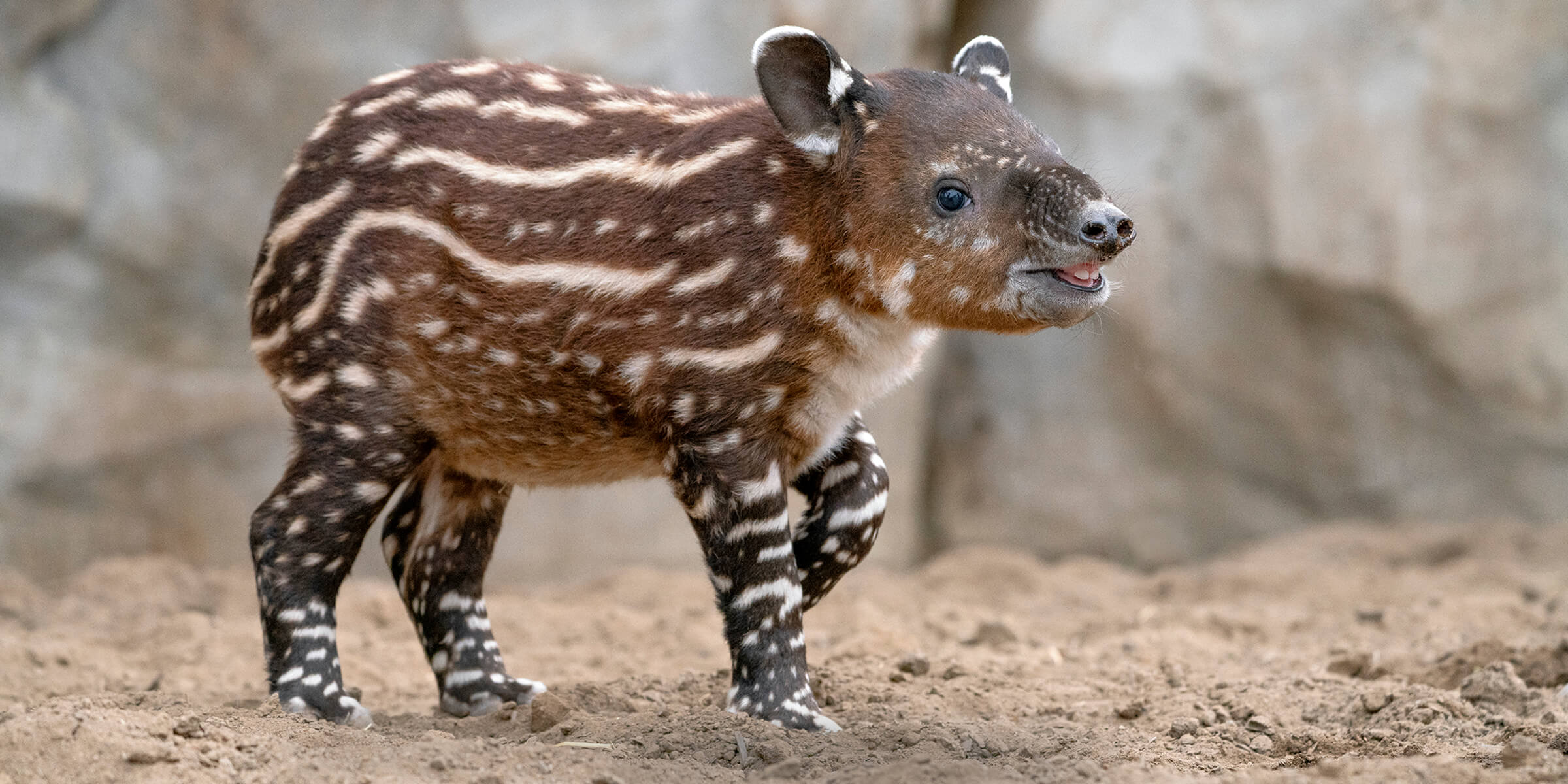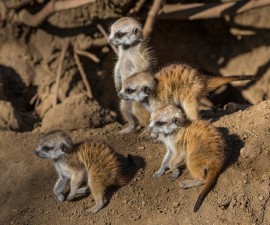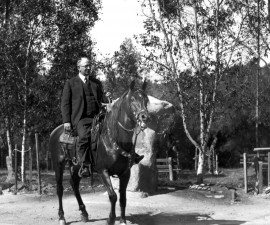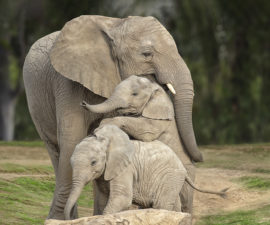BY Peggy Scott
Photography by Ken Bohn
Orange may indeed be the new black, but in the case of a recent arrival at the Harry and Grace Steele Elephant Odyssey, striped is the new cute. On June 13, a Baird’s tapir named Luna gave birth to a 22-pound bouncing baby boy, marking the first time in 30 years that the pitter-patter of tiny Baird’s tapir tootsies could be heard at the San Diego Zoo. According to keepers, that sweet sound—like the calf’s other noises—is music to their ears. “He is spunky and fun, and greets us with little chirps,” says Kimberly Hyde, a senior keeper at the Zoo, who added that, like all baby tapirs, the little calf sported a characteristic spotted coat that is reminiscent of a watermelon. “He is just so cute, and he wants to share his opinions.” Given the calf’s rocky start, keepers are happy to listen to whatever the youngster has to say.
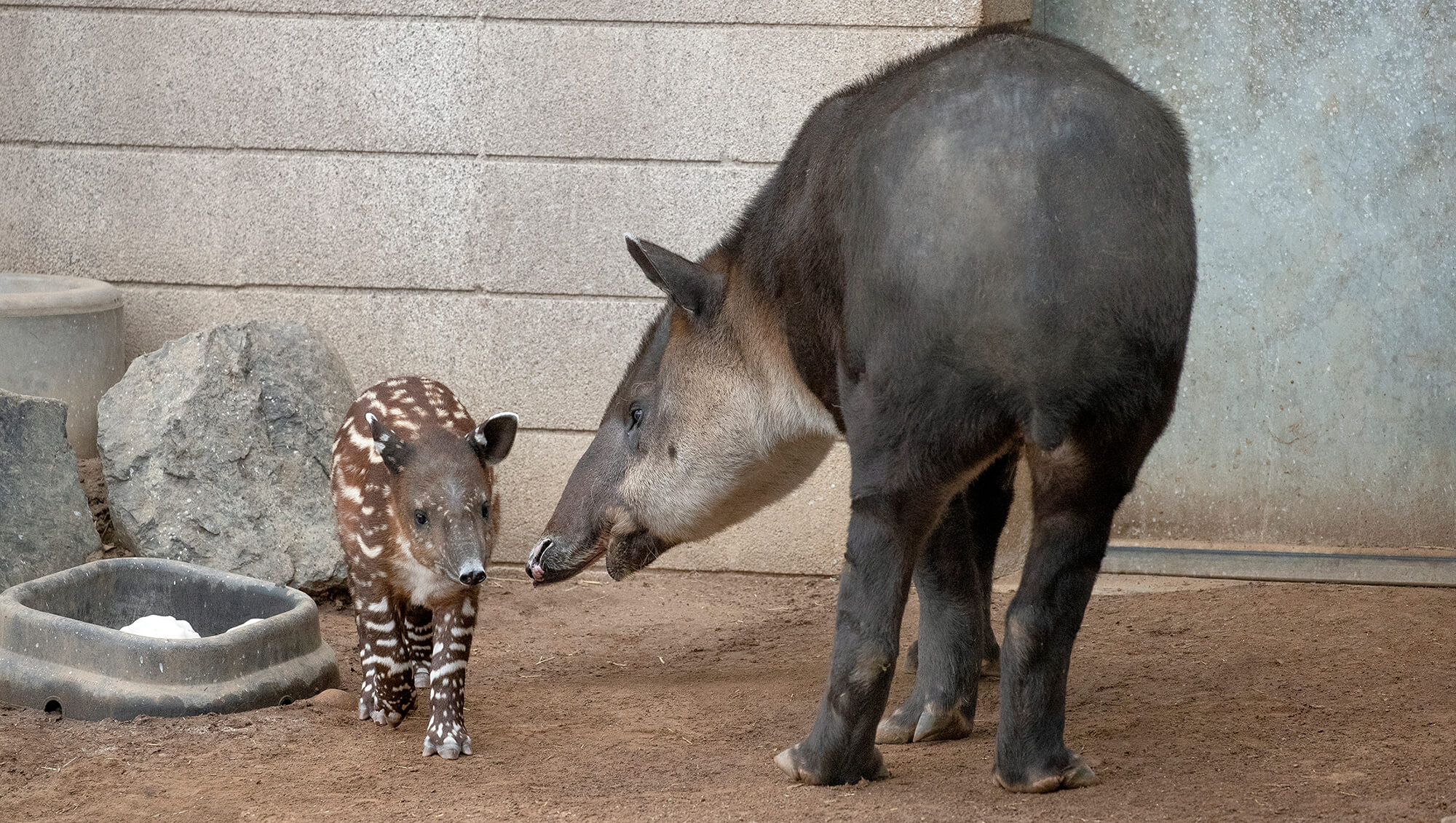
“SNOUT” AND ABOUT
Rachel, another Baird’s tapir at the Zoo, helped welcome Don into the fold.
A New “Don”
Zoo veterinary and animal care staff were ready for the calf’s arrival. For months leading up to the birth, ultrasounds were performed on Luna to help staff gain valuable information that would be helpful for future pregnancies. Following a 13-month gestation period, however, first-time mom Luna was apparently overwhelmed by the birth of her calf, who is named “Don.” When she wasn’t able to care for the baby, animal care staff stepped up. “Luna received help from our nursery staff, but she never left the exhibit,” explains Janet Hawes, senior nursery keeper. “Under our new assisted-care protocols, neonates are never separated from their family. Don has visual and tactile access to both Luna and his father, Felix.”
To make sure Don received the best possible chance to thrive, keepers milked Luna for several days after he was born in order to provide him with the nutrients he needed. “Getting that maternal milk was important because we were able to transfer the colostrum to the baby. Colostrum is vital because it provides immune antibodies, which help protect against illness,” Janet says. She was quick to add that they made sure the experience was positive for Luna as well. “Keepers reached through the corral to milk her by hand while other keepers fed her goodies and scratched her in her favorite places. She was very tolerant.” Don’s diet was soon being supplemented with a formula of whole goat’s milk mixed with a little protein powder and some lactose. “The number of bottles he receives daily will decrease, but the amount of each feeding increases,” Janet explains.
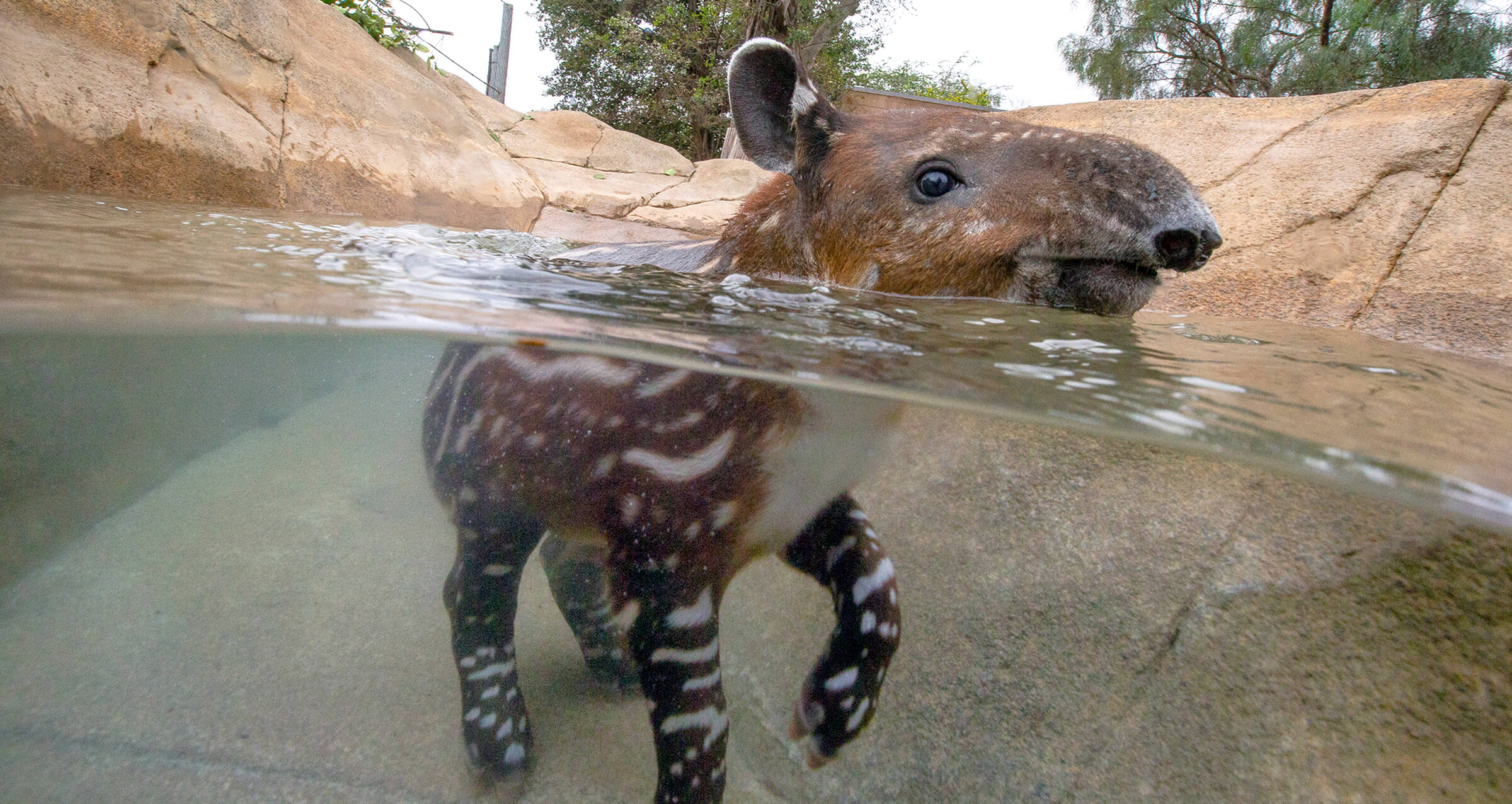
Tapir Off—and Running
At one month of age, Don was already the life of the party. “He likes to chase us around and explore his exhibit, sniffing and licking, using that little snout. He is very curious,” Kimberly says. That inquisitiveness has grown to include the other tapirs, such as Rachel, the Zoo’s older female; as well some of the mixed-species exhibit’s other residents, including the capybaras, who seem to find him as fascinating as he does them.
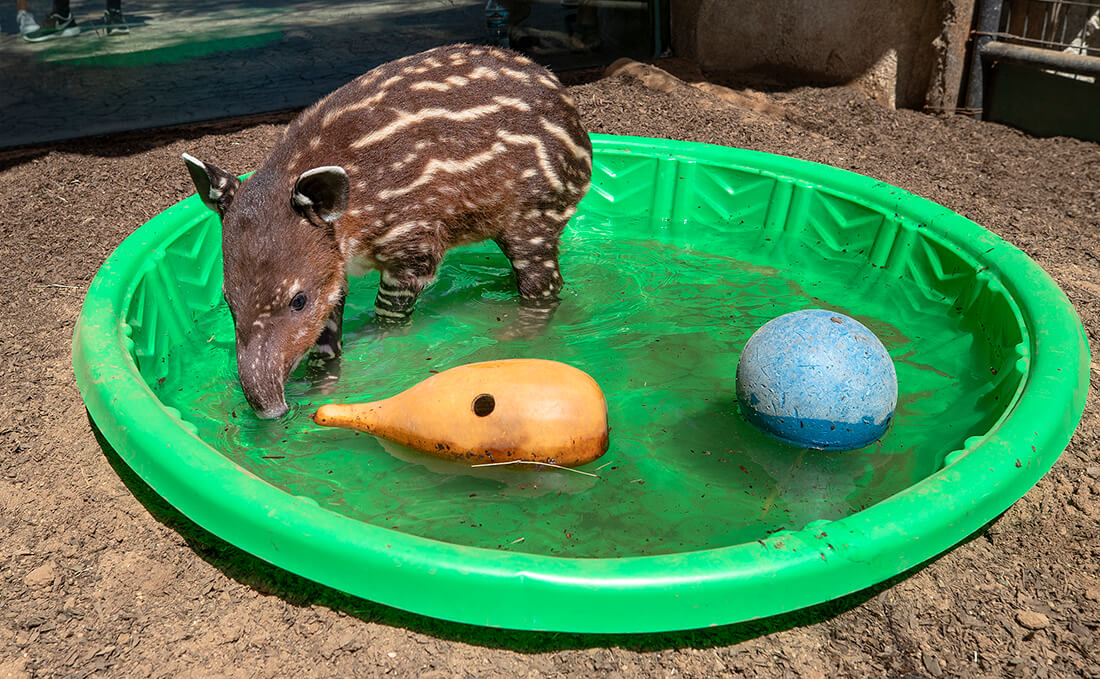
MAKING WAVES
Don’s swimming “lessons” started in his wading pool, where he played with his toys. Tapirs love water, and Don wasted no time in getting his feet wet.
Baird’s tapirs are native to the tropical forests of Mexico and Central America, and that patterned coat comes in handy for the youngsters. “The spots and stripes on their darker coat help them blend in with the shadows created by the underbrush in the forest,” Kimberly explains. “That makes it harder for predators to see them. Once the tapirs are grown, at around eight months of age, the spots fade and they look like adults.”
Tapirs are water-loving animals, and Don is no exception—even at such a young age. “He plays in his pool with his toys, and was going in up to his chin at just a few weeks old,” Kimberly says. “As he gets older, we hope to get him comfortable with even deeper water, so he can actually swim.”
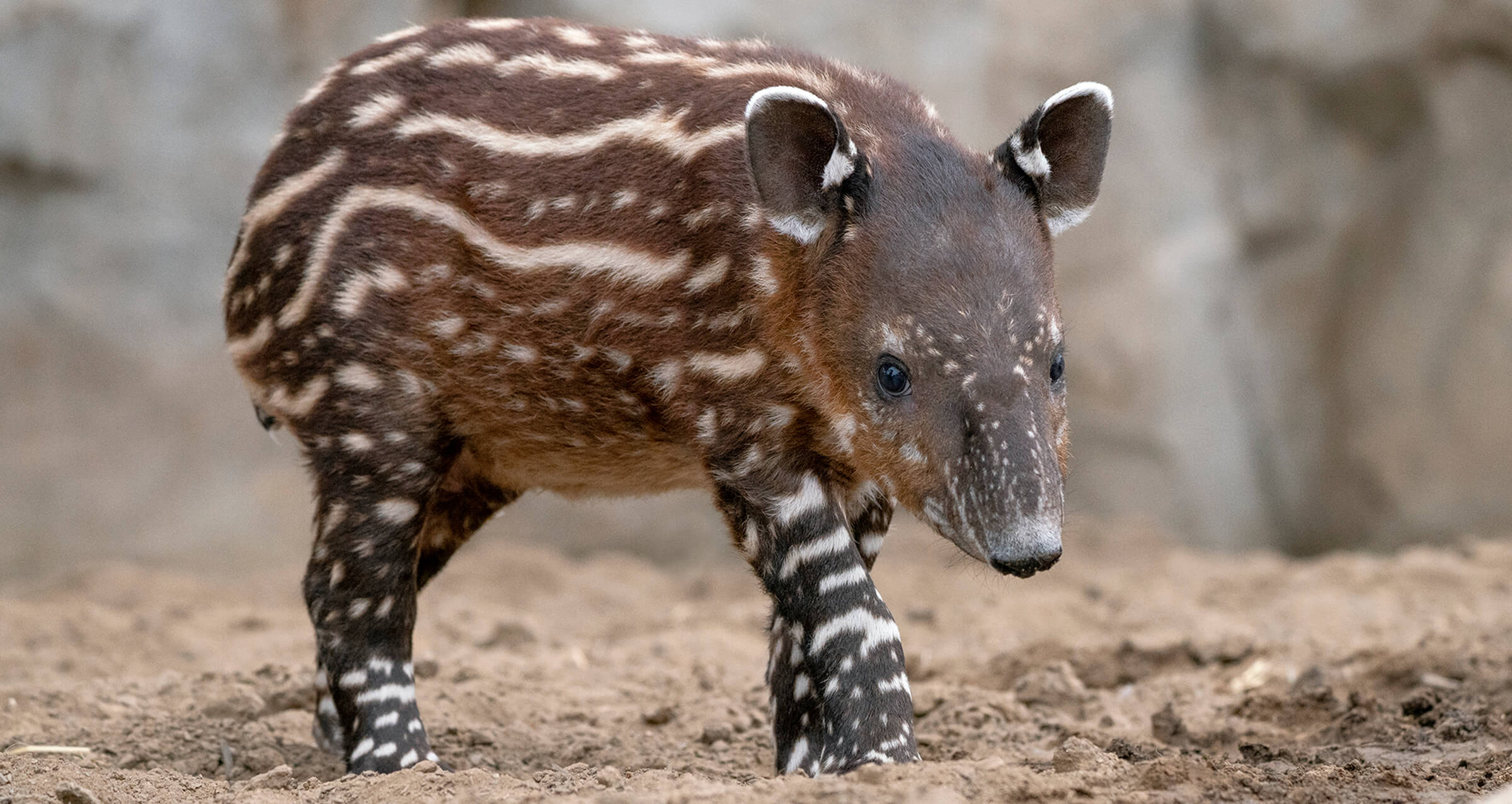
Looking Ahead, Looking Up
Animal care staff always have the best interest of their charges at heart, and getting an early start on husbandry needs is a big part of that. “Don is being trained to step on and off a scale, so we can keep track of his growth now and his progress in the future,” Kimberly says. “The more comfortable he is with the different procedures, the better it is. I have also started to desensitize him to having his feet picked up and inspected so that later on, when he needs his nails trimmed or foot treatments, it will be easy for him.”
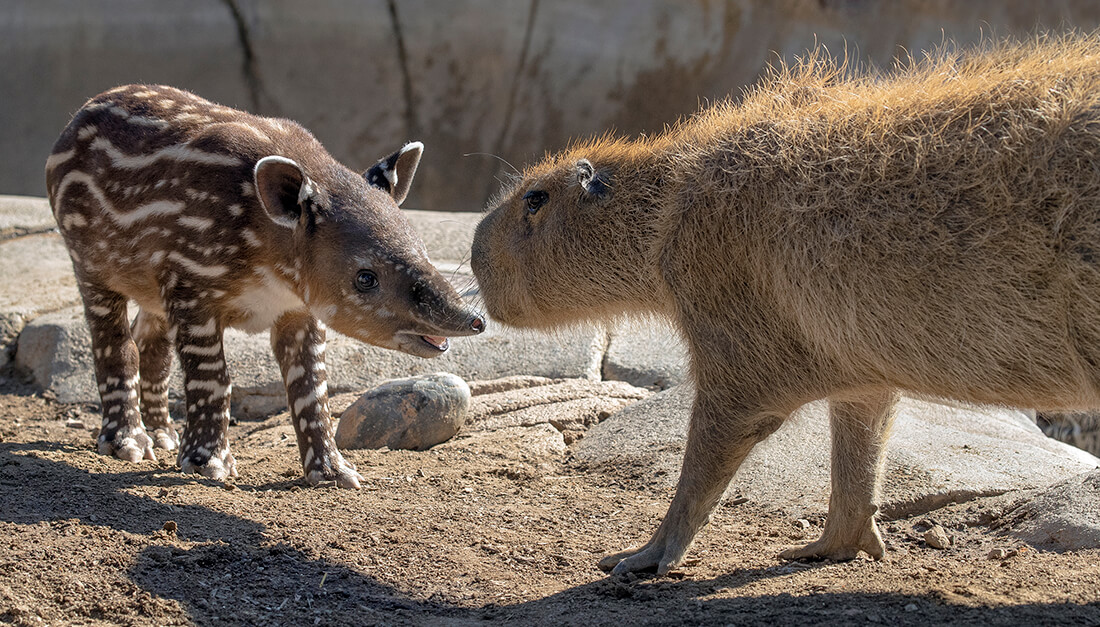
WHO (AND WHAT) ARE YOU?
Don quickly warmed up to the mixed exhibit’s other residents, including capybaras.
Not only is Don a big deal to his family, and Zoo staff and visitors, he is an important addition to the Baird’s tapir population. The Baird’s tapir is listed as Endangered on the International Union for Conservation of Nature (IUCN) Red List of Threatened Species. Habitat loss and hunting have contributed to an estimated 50 percent population decline over the past 30 years. Along with its commitment to tapir conservation, the San Diego Zoo participates in the Association of Zoos and Aquariums’ (AZA) Baird’s tapir Species Survival Plan (SSP), which aims to maintain a genetically viable population of this species in accredited institutions. “The last endangered Baird’s calf born at the Zoo was in 1988, so we’re thrilled with Don,” says Matt Akel, animal care manager. “And we’re happy to provide him with optimal care.”
Here’s hoping that Don has other little striped watermelons to share all that attention with sometime soon.

